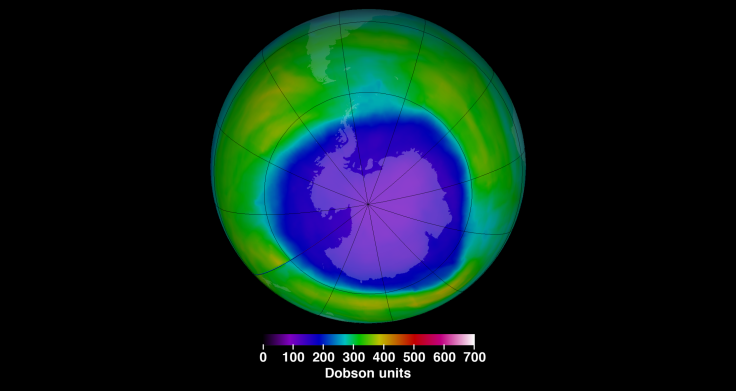Banned Ozone-Destroying Chemicals Still In Production, Scientists Baffled

A new study from National Oceanic and Atmospheric Administration, aka NOAA, has revealed that the production of ozone-destroying chemicals banned under the 1987 Montreal Protocol is still on and rising.
The find was made after NOAA witnessed a spike in trichlorofluoromethane or CFC-11, a type of chlorofluorocarbon and the second-most abundant gas in the atmosphere contributing to the depletion of ozone layer. The gas was widely used in aerosol sprays, packing materials, and refrigerants, but due to the ozone hole over Antartica, its production was phased out completely by 2010.
The results of the effort have been evident. CFC concentration in the atmosphere has declined by 15 percent from its peak in 1993, but over the past few years, the rate of decline has slowed down.
According to global CFC-11 levels measured by scientists at NOAA and Cooperative Institute for Research in Environmental Sciences (CIRES), the concentration of the chemical declined at an accelerating rate till 2002, but then, the fall became stagnant for almost a decade.
The situation got even worse in the years after 2012 when the rate of CFC decline slowed by 50 percent, which could have only been possible due to an increase in CFC emissions. Further measurements revealed that between 2014 and 2016, CFC-11 emissions were 25 percent higher than average emissions measured from 2002 to 2012. Notably, this is the first time emission of one of the three most abundant CFCs has increased for a sustained period, despite production control measures in place.
As ScienceAlert reported, a large reservoir of CFC-11 is contained in foam insulation in buildings, chillers, and appliances manufactured decades ago, but none of the factors could justify the sudden spike over past few years. This led the researchers to posit that someone might be indulging in the production of the chemical.
Though they do not know who’s responsible for the mysterious spike in CFC levels, the wide-spanning NOAA measurements, such as the difference between CFC-11 concentrations on both hemispheres, have hinted that the source might be located somewhere on the northern hemisphere, possibly around Eastern Asia.
"We're raising a flag to the global community to say, 'This is what's going on, and it is taking us away from timely recovery from ozone depletion,'" NOAA scientist Stephen Montzka, lead author of the paper, said in a statement. "Further work is needed to figure out exactly why emissions of CFC-11 are increasing and if something can be done about it soon."
The mysterious source could be producing the gas for some specific purpose or as a byproduct of a complex process, but for now, not many details regarding the target, including its precise location, are available. The researchers have said they would need more measurements to figure the exact location of the source and take necessary action.
That said, if the prompt action isn't taken as soon as possible, these emissions can prove to be a major roadblock and delay the recovery of ozone.
The study, titled "An unexpected and persistent increase in global emissions of ozone-depleting CFC-11," was published May 16 in the journal Nature.
© Copyright IBTimes 2024. All rights reserved.




















